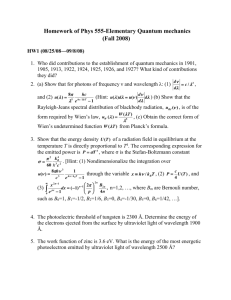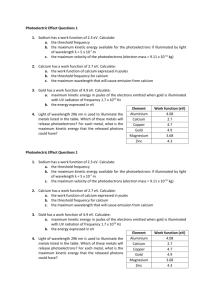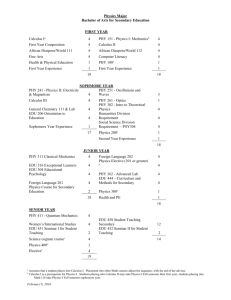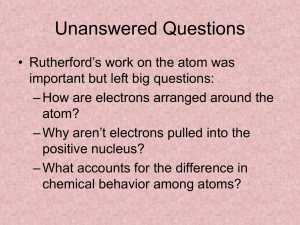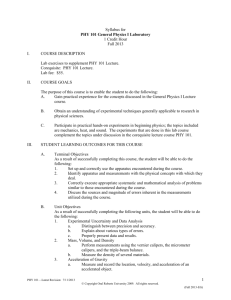HW Problems
advertisement
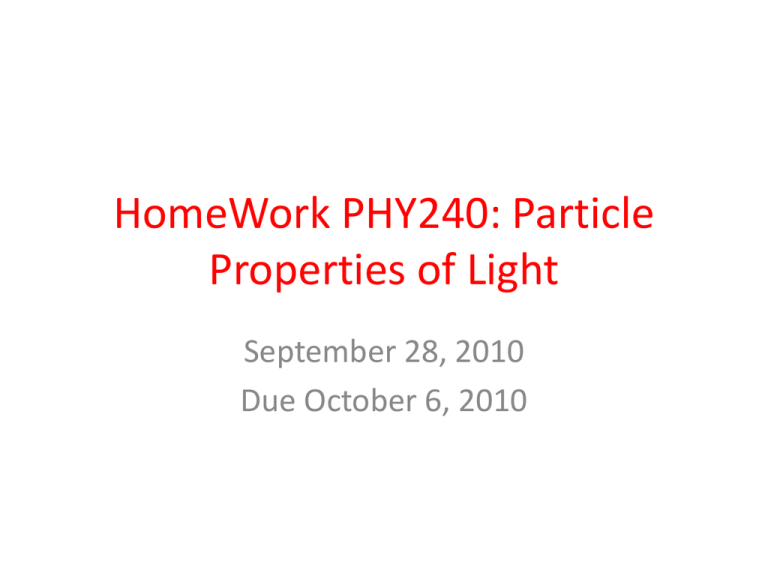
HomeWork PHY240: Particle Properties of Light September 28, 2010 Due October 6, 2010 PHY240 PHYIII: Chp3 Particle Properties of Waves • • • • • • • • Question #1 Planck constant (i) is a universal constant (ii) is the same for all metals (iii) is different for different metals (iv) characterises the quantum scale A. I,IV B. I,II, IV C. I, III,IV D. I, III E. II,III 2 PHY240 PHY III Chp2 • Question #2 • (a) Lithium, beryllium and mercury have work functions of 2.3 eV, 3.9 eV and 4.5 eV, respectively. If a 400-nm light is incident on each of these metals, determine • (i) which metals exhibit the photoelectric effect, and • (ii) the maximum kinetic energy for the photoelectron in each case (in eV) 3 Phy240 PHY III Question # 3 • (b) Molybdenum has a work function of 4.2 eV. • (i) Find the cut-off wavelength (in nm) and threshold frequency for the photoelectric effect. • (ii) Calculate the stopping potential if the incident radiation has a wavelength of 180 nm. 4 PHY240 PHY III • • • • Question #4 Light of wavelength 400 nm is incident upon lithium (W0 = 2.9 eV). Calculate (a) the photon energy and (b) the stopping potential, Vs (c) What frequency of light is needed to produce electrons of kinetic energy 3 eV from illumination of lithium? 5 Phy240 PHY III Question #5 Which of the following statement(s) is (are) true? • I The energy of the quantum of light is proportional to the frequency of the wave model of light • II In photoelectricity, the photoelectrons has as much energy as the quantum of light which causes it to be ejected • III In photoelectricity, no time delay in the emission of photoelectrons would be expected in the quantum theory • Murugeshan, S. Chand & Company, New Delhi, pg. 136, Q28 (for I), Q29, Q30 (for II,III) 6





